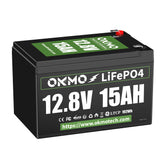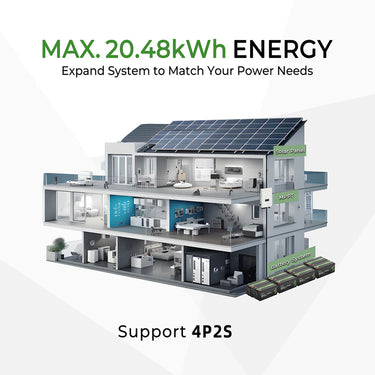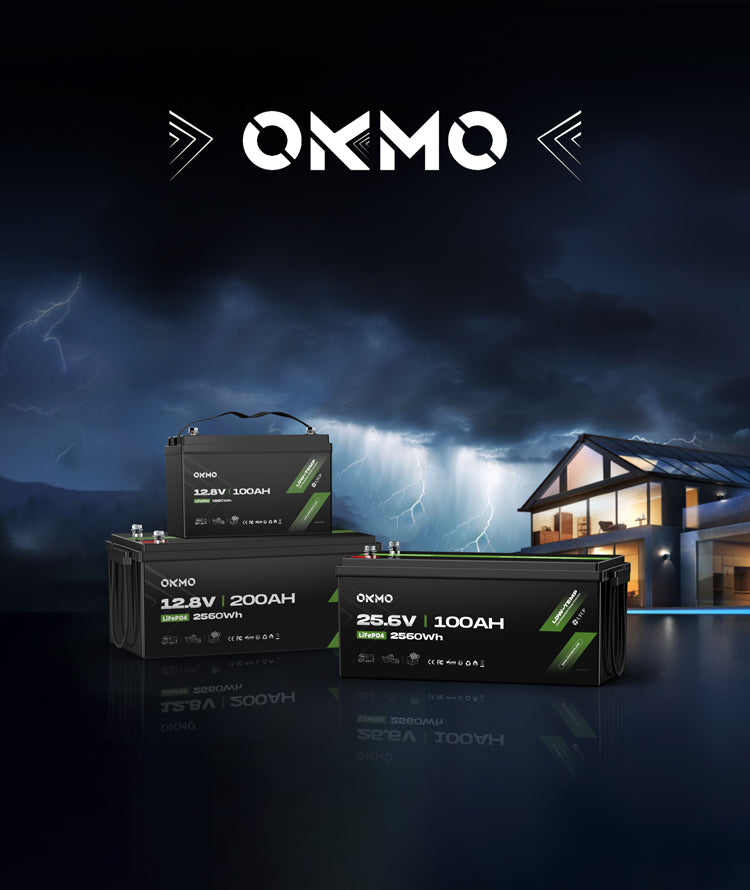LiFePO4 Battery vs. Lithium-ion Battery: The Performance Debate and Paths to Coexistence
 In the pursuit of green energy and efficient energy storage, lithium-ion batteries (Li-ion) have become the cornerstone of modern technology. However, when we talk about "lithium-ion batteries," we often overlook the diverse chemical world within them. Among these, the lithium iron phosphate battery (LiFePO4) stands out as a unique member of the lithium-ion family, carving its niche with distinct performance characteristics. Understanding the differences and relationships between the two is key to selecting the appropriate energy solution.
In the pursuit of green energy and efficient energy storage, lithium-ion batteries (Li-ion) have become the cornerstone of modern technology. However, when we talk about "lithium-ion batteries," we often overlook the diverse chemical world within them. Among these, the lithium iron phosphate battery (LiFePO4) stands out as a unique member of the lithium-ion family, carving its niche with distinct performance characteristics. Understanding the differences and relationships between the two is key to selecting the appropriate energy solution.
I. Shared Lineage: Core Commonalities within the Lithium-Ion Family
LiFePO4 batteries are not independent of the lithium-ion technology system; they are fundamentally an important technical branch of lithium-ion batteries. Both share the core working principle: during charging and discharging, lithium ions (Li⁺) shuttle back and forth ("intercalate" and "deintercalate") between the positive and negative electrode materials, while electrons flow through the external circuit to form an electric current, enabling the conversion between chemical and electrical energy. Their basic structure is also identical: both consist of four core components – positive electrode (cathode), negative electrode (anode), separator, and electrolyte.
 II. Cathode Material: The Root of Difference and Watershed of Performance
II. Cathode Material: The Root of Difference and Watershed of Performance
The core distinction lies in the choice of cathode material, which directly shapes the key battery performance:
-
Energy Density: Lithium-ion Batteries (Represented by NMC/NCA) Lead
-
Lithium Nickel Manganese Cobalt Oxide (NMC) / Lithium Nickel Cobalt Aluminum Oxide (NCA): These materials allow for higher operating voltages (nominal voltage ~3.6V-3.7V) and higher specific capacity, resulting in significantly higher volumetric energy density (Wh/L) and gravimetric energy density (Wh/kg). This makes ternary batteries the preferred choice for devices prioritizing lightweight design and long range, such as high-end electric vehicles (EVs), smartphones, and laptops.
-
Lithium Iron Phosphate (LiFePO4): Uses lithium iron phosphate as the cathode material. Its operating voltage is lower (nominal voltage ~3.2V-3.3V), and its theoretical specific capacity is also lower, leading to relatively lower energy density (typically 20%-40% lower than high-quality NMC/NCA batteries). For the same energy requirement, LiFePO4 batteries tend to be bulkier and heavier.
-
-
Safety: LiFePO4 Batteries Significantly Superior
-
LiFePO4: Its core advantage is exceptional thermal and chemical stability. The olivine structure of LiFePO4 is highly stable. Even under extreme abuse conditions like high temperature, overcharging, nail penetration, or crushing, it has a high decomposition temperature (~700°C) and does not readily release oxygen, drastically reducing the risk of severe thermal runaway (fire or explosion).
-
NMC/NCA Batteries: Ternary materials (especially high-nickel systems) are relatively unstable at high temperatures or under severe abuse. They decompose at lower temperatures (~200°C), and the decomposition process can release oxygen, exacerbating combustion risks. Consequently, they require more complex and expensive Battery Management Systems (BMS) for rigorous monitoring and protection.
-
-
Cycle Life: LiFePO4 Batteries Hold a Clear Advantage
-
LiFePO4: Renowned for its extremely long cycle life. High-quality LiFePO4 batteries typically achieve 3000 cycles or more, even up to 7000+ cycles (retaining 80% capacity), with some energy storage products claiming up to 10,000 cycles. Their structure undergoes minimal changes during repeated lithium-ion intercalation/deintercalation, leading to slow degradation.
-
NMC/NCA Batteries: Have a relatively shorter cycle life, with mainstream products typically lasting around 1000-2000 cycles (retaining 80% capacity). The material structural changes driven by high energy density and voltage plateau are a major factor limiting their lifespan.
-
-
Cost & Raw Materials: LiFePO4 Batteries Offer Cost Advantage
-
LiFePO4: The cathode material primarily consists of iron (Fe) and phosphorus (P), resources that are abundant, inexpensive, and non-toxic. It contains no expensive cobalt (Co) or nickel (Ni). Recent mass production and process optimization have led to continuously decreasing costs, making it one of the most cost-effective lithium battery technologies.
-
NMC/NCA Batteries: Heavily reliant on cobalt, nickel, and other metals with volatile prices. Cobalt, in particular, is scarce and has ethical concerns associated with its mining. High raw material costs constitute a major part of their price. Although low-cobalt/cobalt-free technologies are under development, the cost advantage still lies with LiFePO4.
-
-
Temperature Performance: Different Strengths
-
LiFePO4: Excellent high-temperature performance, but relatively poor low-temperature performance. Below 0°C, its capacity and power output can drop significantly (though some advanced products show improvement through electrolyte and material process enhancements).
-
NMC/NCA Batteries: Generally exhibit better low-temperature performance than LiFePO4, maintaining relatively better performance in cold environments, but are less stable at high temperatures compared to LiFePO4.
-
 III. Performance Comparison Summary Table
III. Performance Comparison Summary Table
| Characteristic | LiFePO4 Battery | NMC/NCA Battery |
|---|---|---|
| Energy Density | Lower (Typically 20%-40% lower) | High (Volumetric & Gravimetric) |
| Safety | Very High (Excellent thermal/chem stability, very low thermal runaway risk) | Medium-Low (Requires strong BMS, higher thermal runaway risk) |
| Cycle Life | Very Long (3000-7000+ cycles) | Medium (Typically 1000-2000 cycles) |
| Cost | Low (Abundant, cheap materials; no Co/Ni) | High (Reliant on Co, Ni, etc.) |
| Low-Temp Performance | Poor (Significant drop below 0°C) | Better |
| High-Temp Performance | Excellent | Poor (Requires thermal management) |
| Nominal Voltage | ~3.2V-3.3V | ~3.6V-3.7V |
| Key Advantages | Safety, Longevity, Cost-Effective, Eco-friendly | High Energy Density, Lightweight/Compact, Better Cold Weather |
| Typical Applications | EVs (Entry/Mid-Level, Commercial/Buses), Grid/ESS, Power Tools, Marine | EVs (High-End/Long Range), Consumer Electronics (Phones/Laptops), Drones |
 IV. Coexistence and Co-prosperity: Complementary Application Territories
IV. Coexistence and Co-prosperity: Complementary Application Territories
LiFePO4 and NMC/NCA are not in a simple substitution relationship. Instead, based on their respective strengths, they have defined complementary territories within the vast lithium battery market:
-
Strongholds of LiFePO4 Batteries:
-
Electric Vehicles: Particularly dominant in entry/mid-level cars, commercial vehicles (buses, logistics trucks), taxis, and other areas demanding high cost-effectiveness, safety, and long service life. The success of BYD's "Blade Battery" is built on this. Tesla and others also incorporate LiFePO4 in some models.
-
Large-Scale Energy Storage Systems (ESS): Grid peak shaving/valley filling, renewable energy (solar, wind) integration, commercial/industrial & residential energy storage. Long lifespan, high safety, and low cost are core advantages, directly impacting project economics and long-term reliability.
-
Electric Boats/Forklifts/Special Vehicles: Safety and durability are paramount.
-
Electric Two/Three-Wheelers: Cost and safety are core considerations.
-
Uninterruptible Power Supplies (UPS): Long life and high safety are advantageous.
-
-
Core Domains of NMC/NCA Batteries:
-
High-End/Long-Range Electric Vehicles: Where energy density and driving range are pursued to the extreme.
-
Consumer Electronics: Smartphones, laptops, tablets, TWS earbuds, etc., where compactness and lightness (high energy density) are critical.
-
Power Tools: Require high power output and good energy density.
-
Drones: Extremely weight-sensitive, demanding high energy density.
-
High-Performance Scenarios: Such as electric sports cars prioritizing acceleration.
-
Conclusion
 The comparison between LiFePO4 and lithium-ion batteries (represented by NMC/NCA) vividly illustrates the diversified development of lithium battery technology. LiFePO4 has established formidable advantages in specific domains with its "iron-clad" safety and longevity (high safety, ultra-long lifespan, low cost). Meanwhile, ternary lithium dominates markets demanding extreme compactness, weight savings, and range with its "pinnacle of energy density" (high energy density, better low-temperature performance). They are not replacements but rather, based on different application needs, jointly support the vast lithium battery ecosystem. As technology continues to advance (e.g., improving LiFePO4 low-temperature performance, enhancing NMC safety, exploring cobalt-free cathodes), the performance boundaries may blur. Competition and cooperation will coexist long-term, collectively driving innovation in energy storage technology to empower a cleaner, more efficient, and safer future. The choice between them ultimately depends on the weight given to core factors like safety, energy density, lifespan, cost, and temperature performance in the specific application scenario.
The comparison between LiFePO4 and lithium-ion batteries (represented by NMC/NCA) vividly illustrates the diversified development of lithium battery technology. LiFePO4 has established formidable advantages in specific domains with its "iron-clad" safety and longevity (high safety, ultra-long lifespan, low cost). Meanwhile, ternary lithium dominates markets demanding extreme compactness, weight savings, and range with its "pinnacle of energy density" (high energy density, better low-temperature performance). They are not replacements but rather, based on different application needs, jointly support the vast lithium battery ecosystem. As technology continues to advance (e.g., improving LiFePO4 low-temperature performance, enhancing NMC safety, exploring cobalt-free cathodes), the performance boundaries may blur. Competition and cooperation will coexist long-term, collectively driving innovation in energy storage technology to empower a cleaner, more efficient, and safer future. The choice between them ultimately depends on the weight given to core factors like safety, energy density, lifespan, cost, and temperature performance in the specific application scenario.









